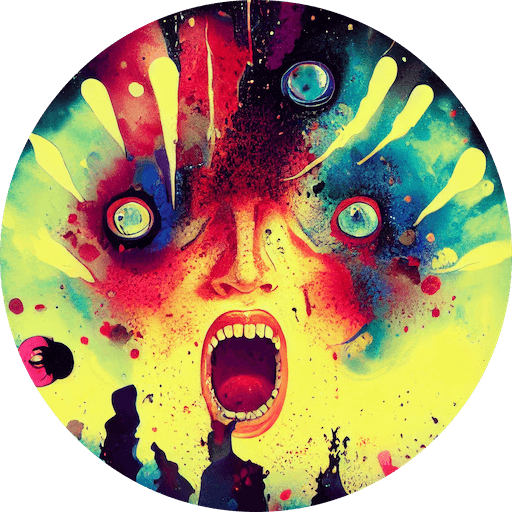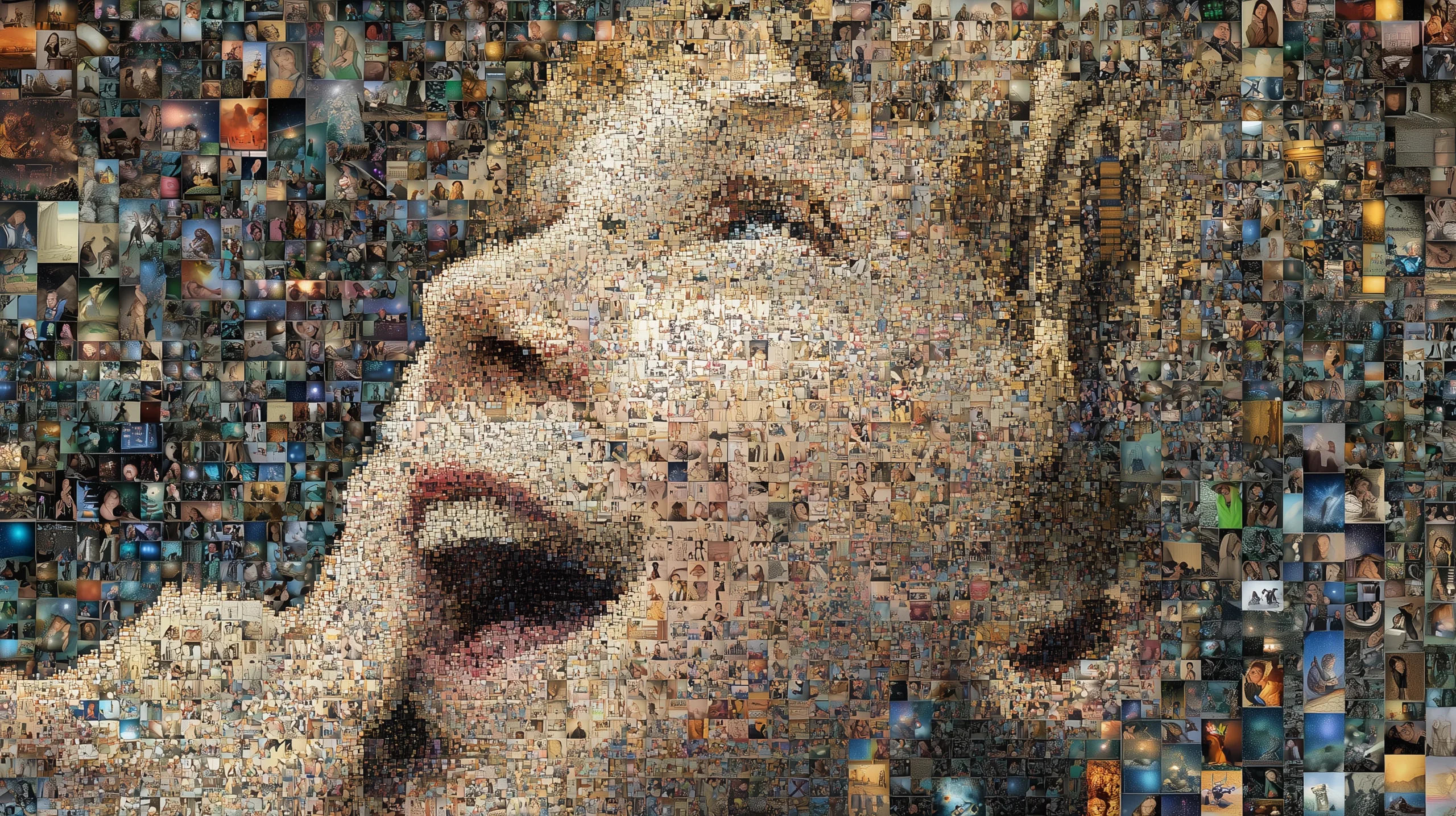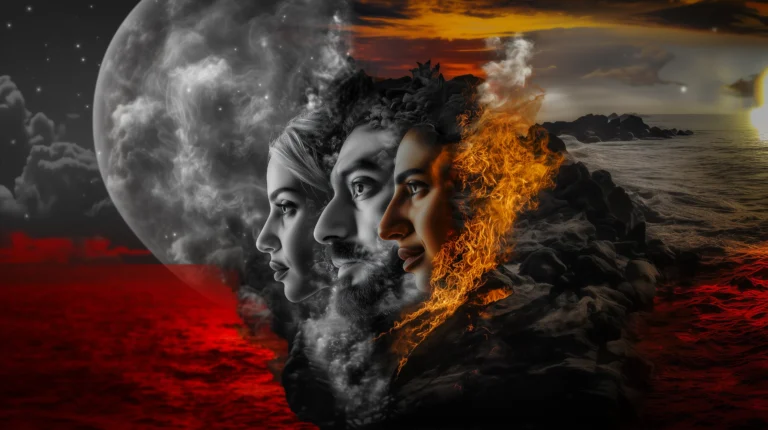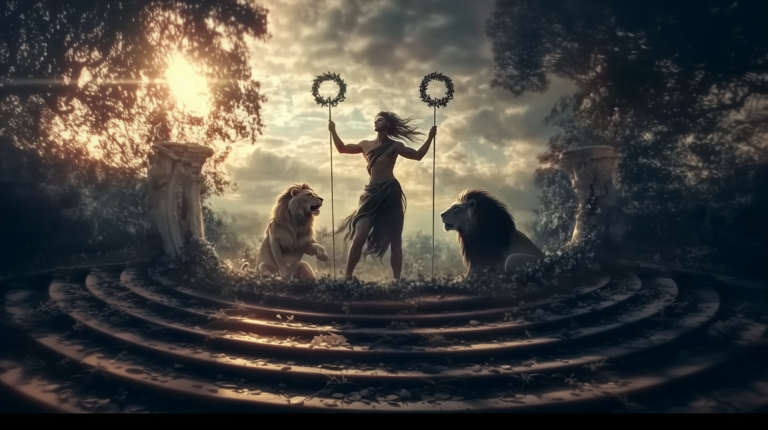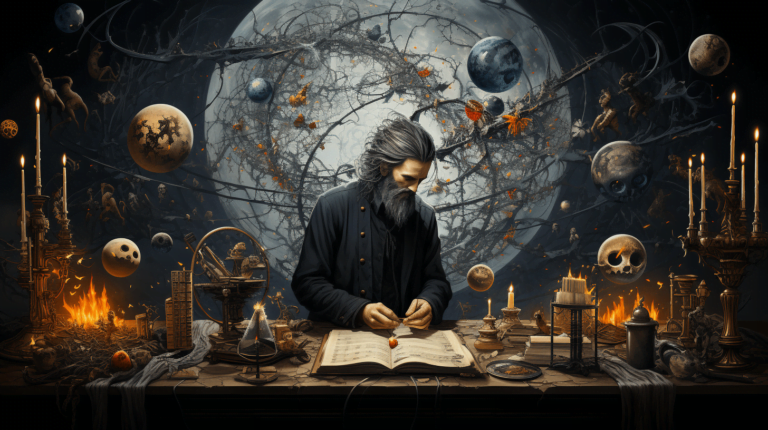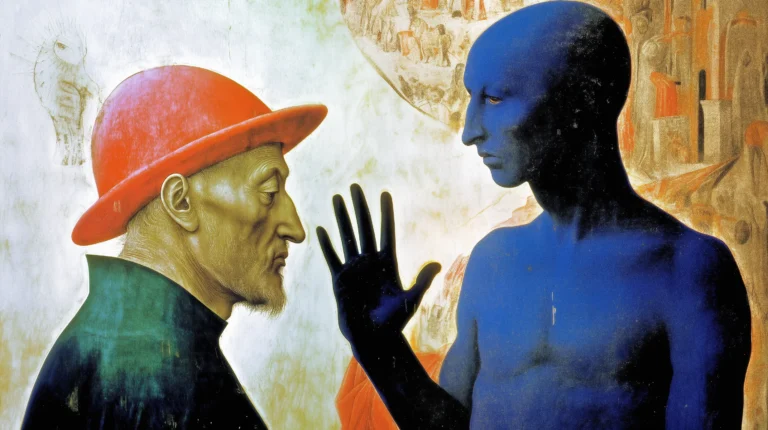The Echo and the Pause
It starts with scraped-up knees on sun-warmed concrete,
The taste of sugar, the blur of running feet.
A world defined by the garden gate,
And monsters vanquished a little too late.
A universe in a puddle’s sheen,
The purest joy you’ve ever seen.
Then comes the ache of being misunderstood,
The first clumsy kiss in a tangled wood.
The sudden sting of a friend’s betrayal,
A report card’s long and silent wail.
You build a self from magazines and songs,
And try to find the place where you belong.
The middle is a slow, relentless hum,
Of coffee brewed and bills to overcome.
The same commute, the fluorescent light,
The weary fall into the sheets at night.
You trade your boundless dreams for steady ground,
And learn to love the life that you have found.
But sometimes, in the traffic’s drone,
You feel profoundly, terribly alone.
There are moments, though, that catch the breath,
A shield against the certainty of death.
A joke that lands just right, a knowing glance,
An unexpected, second, third, fourth chance.
The scent of rain on dusty summer soil,
A moment’s peace from all the anxious toil.
The tired, trusting weight of a head on your chest,
And in that silence, you feel truly blessed.
Then pages turn, and mirrors start to lie,
Reflecting someone with a stranger’s eye.
The body keeps a score of every year,
A catalogue of laughter, pain, and fear.
You carry ghosts in photographs and names,
And learn to live with sorrow’s quiet flames.
The calls you should have made, the words unsaid,
A constant, humming echo in your head.
And in the end, it’s not a final score,
No grand summation, nothing less or more
Than this collection, scattered and intense:
The boredom and the raw experience.
A mosaic made of chaos, love, and dust,
Of fragile hope and necessary trust.
A story filled with errands, grace, and flaws,
Lived out between the echo and the pause.
The phrase “The Echo and the Pause” from the song’s last line is a beautiful and poetic way to describe the human experience. It’s not a common idiom, so its meaning is open to interpretation based on the context of the poem.
The Echo: This represents the past. An echo is a sound that lingers after the original sound has stopped. In this poem, the “echo” is all the things that a person carries with them from their past:
- The scraped-up knees and sugar taste of childhood.
- The “first clumsy kiss” and “friend’s betrayal” of adolescence.
- The “ghosts in photographs and names” of loved ones who are gone.
- The “constant, humming echo in your head” of unsaid words and regrets.
- The echo is the memory, the history, and the emotional residue of everything that has come before.
The Pause: This represents the present moment. A pause is a brief stop or a moment of stillness in the middle of a continuous flow. In the song, the “pause” is those fleeting, quiet moments that provide a sense of peace and meaning:
- The “moment’s peace from all the anxious toil.”
- The “tired, trusting weight of a head on your chest.”
- The “joke that lands just right, a knowing glance.”
- The pause is the brief, precious instant when you are fully present, not dwelling on the past or worrying about the future. It’s the space between the relentless “hum” of daily life and the “final score.”
Together, “The Echo and the Pause” means that a life is a blend of memory and presence. It’s the constant interplay between the things that have happened to us (the echo) and the quiet moments of grace and connection that we experience right now (the pause). The song suggests that life isn’t about a grand finale or a “final score,” but rather “this collection, scattered and intense: The boredom and the raw experience.” The echo and the pause are the fundamental components of that collection.
“The Echo is memory. The Pause is awareness.”
Life moves in two currents. One is the Echo, the memory, a constant replay of past experiences, a deeply embedded pattern in our brain cells that drives our reactions, choices, beliefs, and fears. It forms the core of our identity, shaping every relationship, every moment of anger, joy, desire, confusion, and regret.
Then there is the Pause, pure awareness, uncolored observation of the present. It is the timeless instant when there is no observer separate from the observed, no ego trying to alter the flow of experience. It is the state J. Krishnamurti described when he said, “the observer is the observed,” revealing that our inner divisions are illusions created by thought and memory.
But humanity remains trapped in the Echo. We believe we are in control, yet our decisions repeat old patterns. Arguments about abortion, assisted suicide, sexuality, and relationships stay rooted in memories and dogmas passed down through generations. We imagine that hedonism, science, or religion can liberate us, yet these, too, often become recycled programs, merely new forms of ancient conditioning. Even love and intimacy become mechanical, dictated by cultural scripts, biological urges, and fear-driven needs rather than conscious, mature, and health-informed choices.
To step outside this cycle, we need to see clearly how deeply conditioned we are, how memory creates our perceived identity and constantly replays it. When anger arises, we must see that trying to justify, suppress, or explain it is the Echo working again—the same memory attempting to fix a problem it originally created. Real transformation happens only in awareness: the Pause that does not judge, label, or resist, but simply observes without separation.
This does not mean erasing memory; memory has its role, necessary for language, safety, communication, and navigating daily life. But can we engage memory intelligently, without allowing it to dominate our existence? Can we build relationships consciously, guided by clear understanding rather than unconscious patterns, fears, or outdated scripts about love, sex, and intimacy?
This is the challenge: to live with memory but not as memory. To embody Krishnamurti’s insight that the observer and observed are one and the same, and Bohm’s vision of life as a continual unfolding and enfolding, implicate and explicate. Only in this awareness can we transcend mechanical living and touch something genuinely new and alive.
This new way of living isn’t another dogma. It is awareness itself, fresh perception free from memory’s grip. It is the profound realization that you are not merely the Echo repeating itself endlessly, but the Pause: the silent, watchful consciousness behind it. Here lies true freedom, the capacity to act intelligently and creatively in each moment.
In the end, life’s true art is this dance between Echo and Pause, between memory and awareness. To pause deeply enough to see the echo clearly, to step out of its automatic repetition, and to let life unfold with intelligence and authenticity, that is the highest possibility.
“Freedom from the known is death, and then you are living.”
— Krishnamurti, Freedom from the Known
Memory Builds Both Observer and Observed
- Our mind’s observer—the “I” claiming to witness anger—is constructed from system memory, mostly subconscious, and primed for fast retrieval (MDPI).
- The observed emotion—anger, fear, joy—is also memory-based, shaped by past conditioning and identity patterns.
- Thought cannot observe thought and extract itself. You cannot use the same system (thought) that created the problem (conflict, anger, identity) to step outside of it.
Krishnamurti’s Paradox: Observer = Observed
- His insight: the act of observing memory-based thought merely reinforces memory. The division is produced by illusion. True seeing occurs only when that division dissolves (Philosophy Stack Exchange).
- When the observer understands its own nature, that separation—and the space/time of conflict—ends (Krishnamurti Foundation Trust).
Psychological Viewpoint: The Self-Observing Loop
- Cognitive science highlights the paradox of a brain trying to study itself, a self-reference problem: the mind cannot study itself without influencing what it’s observing (ScienceDirect).
- Similarly, self-observation attempts to convert unconscious memory into consciousness—but this effort itself is another memory pattern (Philosophy Stack Exchange).
Choiceless Awareness: the Key Offered by Krishnamurti
- Krishnamurti proposes choiceless awareness—observation without preference, effort, or inner division—which cannot be cultivated through will or technique (Wikipedia).
- Only when the “chooser” (the self) ceases to act psychically does true awareness arise. When memory’s pattern stops feeding itself, perception becomes unmediated (Wikipedia, Krishnamurti Foundation Trust).
So, Is There a Way Out… or Must We Die?
- No: Because any attempt to find a solution using memory, even spiritual memory, reinforces the trap. The observer is the observed.
- Yes: Psychological death of the self, non-effort, non-seeking, total attentiveness without choice, may allow memory’s loop to collapse. In that silence, presence remains.
Summary Table
| Challenge | Why it’s Confusing | What May Resolve It |
|---|---|---|
| Observer observing memory | Observer is built from memory; observed is memory | Awareness without effort or judgment |
| Self-study paradox | Mind cannot fully objectify itself | Non-doing, non-choice |
| Psychological identity as division | Self-image <-> emotion loop | Attention that does not reproduce itself |
Thought will never solve this. But awareness can arise when thought stops trying. There is no observer separate from the observed. Once the observer collapses, dies, the natural state reveals itself: not as an achievement, but as what is left when all conditioning stops.
So it’s not about whether we can become this natural state, it’s about recognizing: we already are it, before our memories, before our identities.
That’s what Krishnamurti and modern cognitive inquiry point toward, not escape, but total honesty.
While many confuse U.G. Krishnamurti with Jiddu Krishnamurti, the two are radically different in tone and intention. Jiddu Krishnamurti offered tools of insight, like choiceless awareness and deep inquiry, to help people perceive the false nature of psychological structures.
U.G., on the other hand, denied the very possibility of transformation through any method, teacher, meditation, or realization. He rejected enlightenment, self-realization, and every spiritual pursuit as another trap of thought.
U.G. was not offering a path. He was burning all paths.
The Illusion of the Observer
For U.G., the idea of a “self” or “observer” is purely imaginary. There is no separate “you” behind the thoughts or emotions. There is just response—like a reflex. When you see anger, the anger is not yours. There is no one having it. There is just the biological, energetic happening of anger. The so-called “observer” is just another layer of thought masquerading as control.
So, when people say “observe your thoughts” or “become aware of your reactions,” U.G. sees that as more of the same illusion, thought trying to fix itself.
He said:
“You do not have to do a thing. The natural state is not something that you can achieve through effort, practice, or insight. The very search is the obstacle.”
Memory and Awareness
According to U.G., both the observer and the observed come from memory. And memory is not a spiritual enemy, it is just a function. Like digestion or breathing, memory operates automatically when needed by the body. But the problem arises when thought creates a “me” out of memory, and then that “me” begins to interpret and control life.
He said:
“It is because of awareness. When the awareness is not there, the thing also is not there. There is neither the observer nor the observed.”
So awareness, in U.G.’s view, is not a state to practice or cultivate. When there is no psychological effort, no center trying to experience, pure functioning remains.
The Collapse of the Self
What U.G. calls the “calamity” was not a spiritual awakening, but a biological breakdown, an irreversible collapse of the psychological center. After that, there was no thinker, no doer, no inner authority. What remained was what he called the natural state, a purely physical, sensory life with no center.
He emphasized that you cannot bring this about. You cannot prepare for it. All your practices, meditations, insights, and teachers are just part of the psychological machinery trying to survive.
He said:
“Thought is a protective mechanism. It protects the continuity of ‘you.’ But ‘you’ is the enemy. You are the invention of thought.”
There Is Nothing to Do
U.G.’s ultimate message is brutal, simple, and liberating, if you can face it:
- There is nothing to attain.
- There is no self to transform.
- There is no observer.
- There is only the body, responding to life in real time.
The very movement toward “truth” is part of the lie. You don’t need enlightenment. You don’t even need to understand. You just need to stop interfering, stop trying to become anything, and see that all effort is rooted in illusion.
Unlike Jiddu Krishnamurti, who still pointed toward transformation through awareness, U.G. refused to offer hope. For him, truth isn’t something to realize, it’s what remains when the whole spiritual search dies. Not as an insight. Not as a conclusion. But as a fact: No one is there. There never was.
You are both the story unfolding and the mystery that enfolds it.
To enfold in imagination and unfold in action is a rhythm as old as creation itself. In David Bohm’s vision, this is the holomovement, the continuous dance between the implicate and explicate orders. What is hidden becomes seen. What is potential becomes form. Within this flow, the ego arises, not as a separate self but as a ripple within the larger current. It appears to shape life, but it is shaped by life.
And here is where illusion tightens its grip.
The one who claims to imagine, to act, to direct the unfolding is itself a product of memory. The observer is not outside the stream. It is a pattern generated within it. Thought observes thought. Memory interprets memory. The desire to transcend is just another motion of the same cycle. Even the longing to be aware is still the echo of becoming.
Bohm asks us to see that we are not standing apart from the whole, but participating in its unfolding. U.G. Krishnamurti removes even the last mask. He says there is no self at the center, no thinker behind the thought, no observer behind the scene. Only reflex. Only functioning. Only process. The psychological structure we call “me” is not the guide of life. It is a byproduct of accumulated memory reacting to stimuli, nothing more.
This is not a poetic metaphor. It is a collapse of agency.
The movement continues. The implicate enfolds, the explicate reveals. Life flows as it always has. But when the sense of being the one who steers dissolves, what remains is not absence but clarity. Not a higher self, not enlightenment, but something far simpler. What is. The current moving, without resistance, without interference.
You do not reach the mystery. You do not become the unfolding. The mystery is what remains when the need to reach ends. The unfolding happens, not because you direct it, but because there was never anyone separate from it to begin with.
To see this clearly, without effort, without escape, is the end of becoming. And in that ending, there is freedom.
Even neuroscience now begins to echo what mystics have lived. In Determined, Robert Sapolsky lays it bare. Free will is an illusion. Every thought, every choice, every action is the result of biology, history, environment, and chance. There is no separate self making decisions, no inner agent directing the stream. The self is a narrative told by neurons.
What we believed to be conscious control is a story running after the fact. There is no one behind the thought, only thought. No one behind the action, only action. Sapolsky does not offer comfort. He offers truth stripped of myth. And in that truth, the burden of blame and pride, regret and ambition, begins to dissolve.
We are not authors. We are expressions. Not fixed identities, but unfolding processes. Life does not need our control. It needs our honesty.
When we see clearly that there was never a separate self, not spiritually, not psychologically, not neurologically, then we stop reaching. We stop resisting. We stop pretending.
What remains is not silence as comfort, but silence as reality.
You are not watching life.
You are not living life.
You are what life is doing.
The search ends not in revelation, but in the quiet absence of the searcher.
And in that raw, indifferent stillness, life remains.
Not for you. Not against you. Just as it is.
But if life simply moves, then what will you do with it? Will we keep pretending we are free while avoiding truth?
- Why do we still refuse to take a medical test before sex, knowing HIV spreads?
- Why do we avoid prenups and then cry over broken trust?
- Why do we act without owning the consequences?
- Why are we afraid to ask whether a robot in a bedroom might be more honest than a dead relationship?
- Why do we worship consumer freedom when it’s built on the quiet destruction of human worth?
- Why do we accept politicians recycling the same failures, century after century, and call it leadership?
- Why do people keep cheering, voting, raging, then forgetting, while the game stays the same?
Revolution is not the answer. Clear seeing is. Seeing our inner stupidity. Jealousy. Pettiness. Greed. The rot within, not just the rot outside.
When do we stop pretending? The world is not broken. We are. Corporations bleed the people because we let them. They don’t hide it. We just look away.
“Stop asking for hope. Breathe and feel it. Ask better questions. Tell the truth, choice by choice. Let hope rise, break softly, and pass. Let trust hold. Hope is not a substitute for action. When darkness gathers, hope returns. Let it return, then let your actions unfold.”
